The Record 74 is an excellent little vice, it weights 26lbs , has 4 inch jaws and opens to about 4 ½ inches.
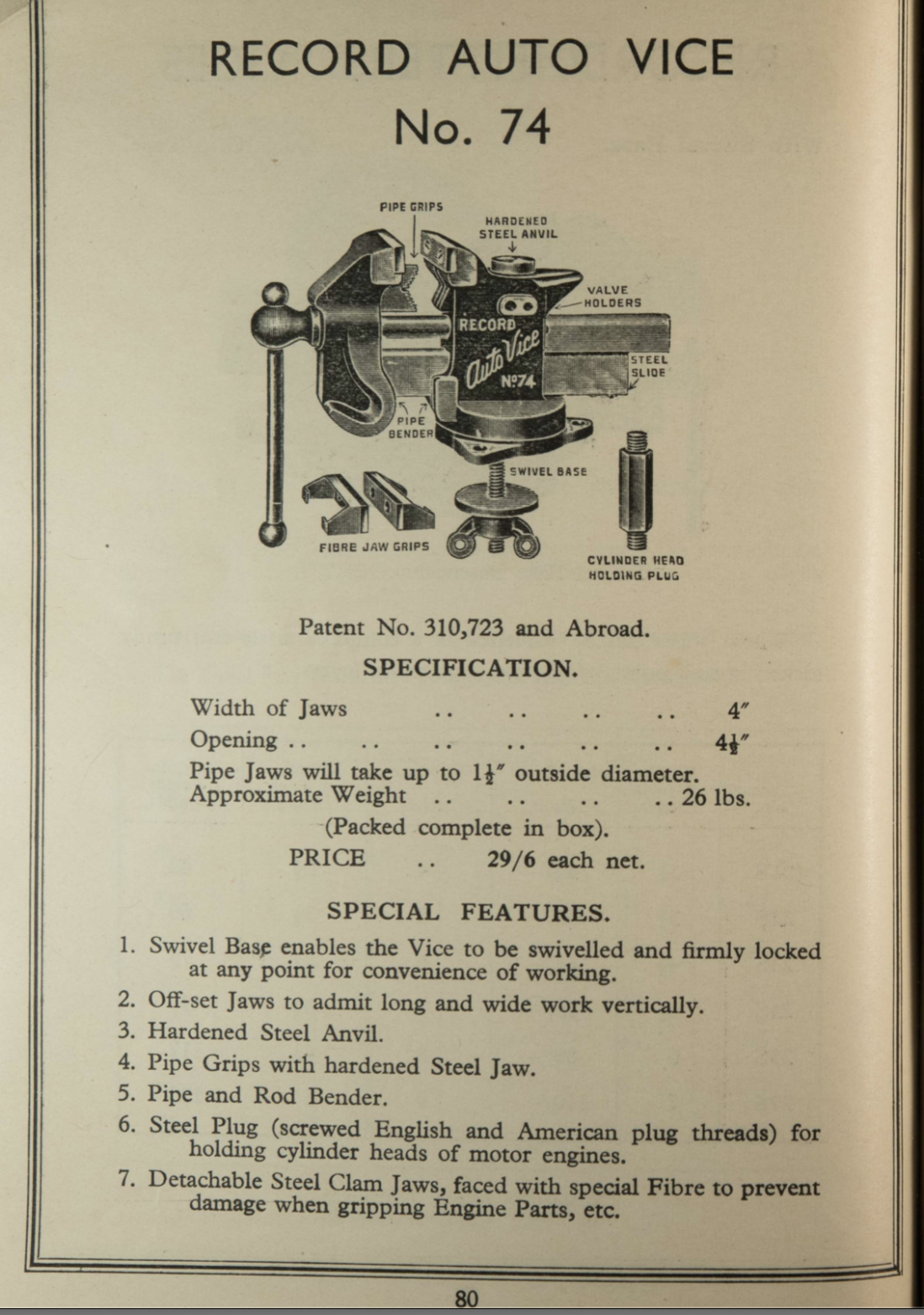
It was pitched as an inexpensive[1] vice for the amateur mechanic or the woodworker who has an occasional need to do a bit of metalwork (where the fact it can be popped into a dog hole on your bench and removed after use is an advantage) and, if the Record marketing maestros are to be believed, was a popular choice in factories and mechanic’s workshops up and down the country.
Mine is about 70-80 years old and, cosmetics aside, is in perfect working order.

If you are patient they can be found at very reasonable prices (mine was about £60 delivered) and at this sort of money they represent an absolute bargain: a very well made vice that is a handy size and has the potential for generations of future use.
The vice has a number of unusual features which are explained in a patent taken out by Record in 1928:
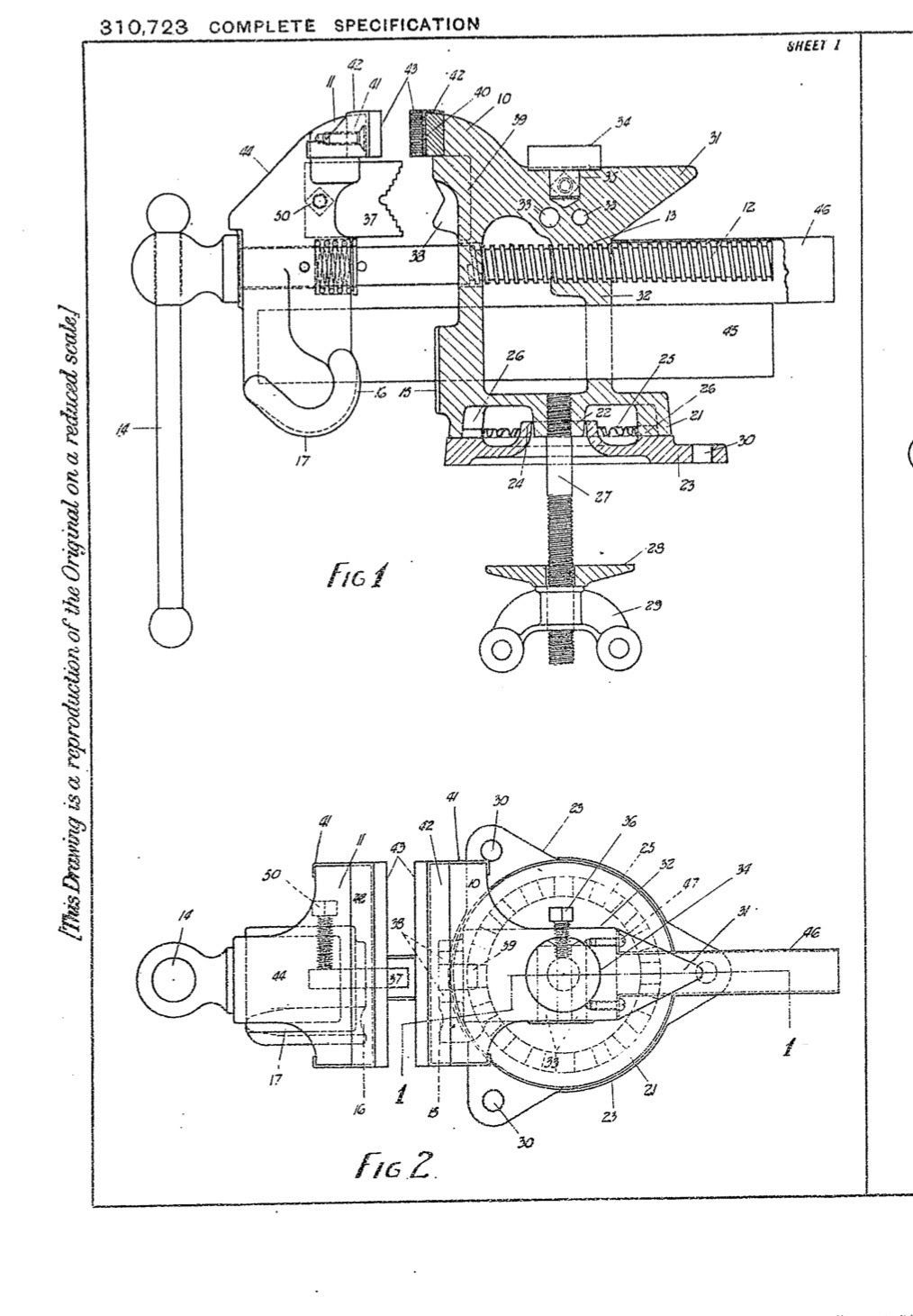
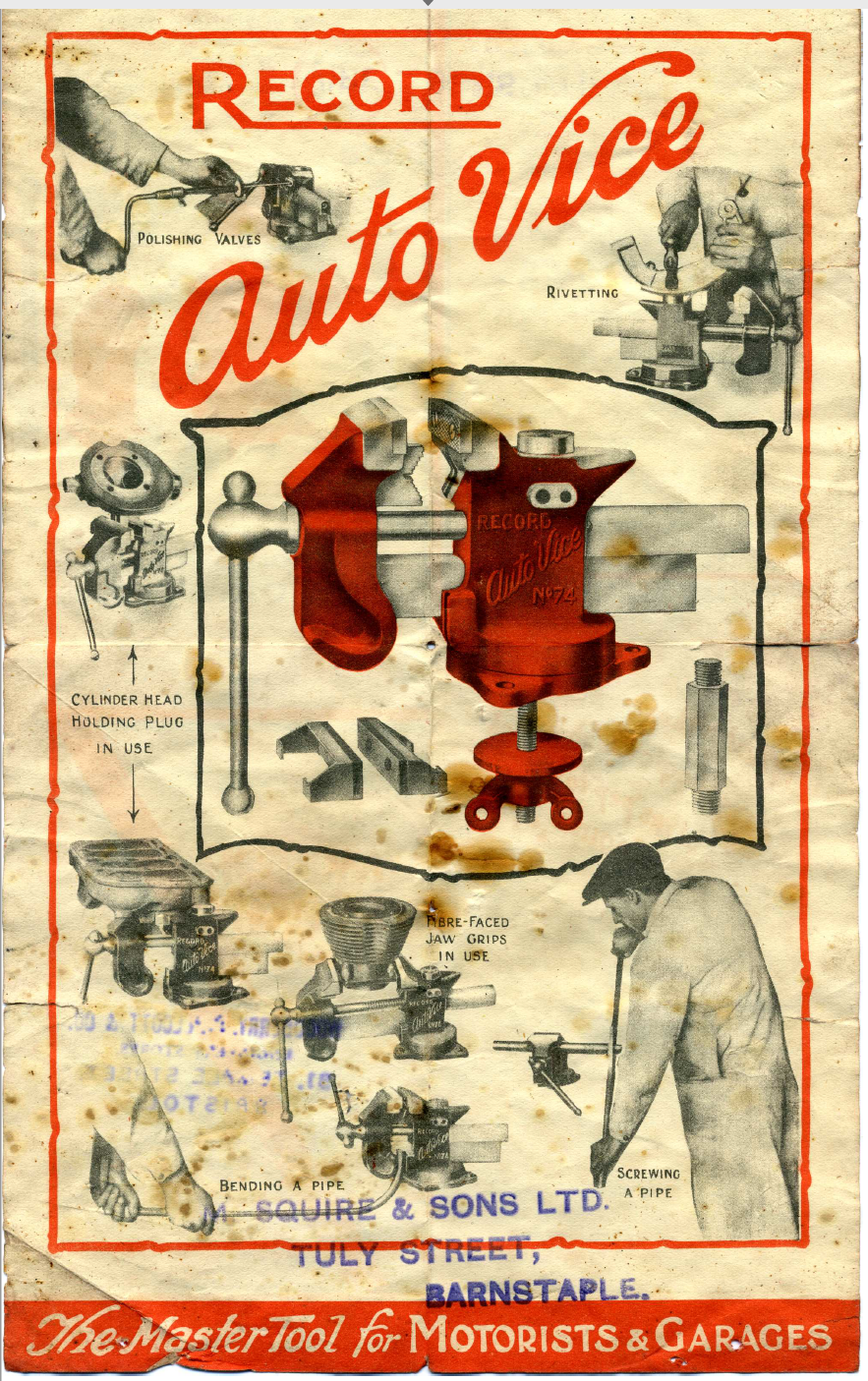
Patent drawings (right). The advert on the right, probably from the 1930s, shows some of the features in action:(with thanks to http://progress-is-fine.blogspot.com for finding the advert)
The advert above shows several of innovative features:
Valve holders
The valve holders consist of two holes of different sizes and according to the patent they are…
adapted to support a valve stem of an internal combustion engine or for use in straightening bolts or rods‘
No doubt automotive technology was a little more agricultural in the 1920s than today, but I am not sure many engine valves got polished in the manner shown above. Still, you never know!
Anvil
The anvil – which comes in handy surprisingly often – is made of hardened steel. It is held in place by a square headed bolt and is removable, a feature that I suspect was included for the manufacturers convenience rather than ours. The “beak” of the anvil, and indeed the rest of the vice body, is cast iron so should not be pounded on too hard.
Pipe Bender
This consists of the curved section at the base of the movable jaw and the vertically grooved lug opposite on the fixed jaw. The pipe is gripped between the grooves of the two lugs and can be bent around the curved part.
The jaws are offset so as to not interfere with the pipe. In the earliest adverts the pipe bender is described as ‘adjustable’, but I have no idea what this refers to (unless it just means that pipes of different size can be accommodated?)
Swivel Base
The underside of the fixed jaw has two tabs which sit in the 9 pairs of notches in the triangular base – simply loosen the monkey nut lift the vice and twist to a new location.
The vices were supplied with some added extras:
fibre jaw grips
for gripping delicate items (good luck finding a vice where these have not already been lost!)
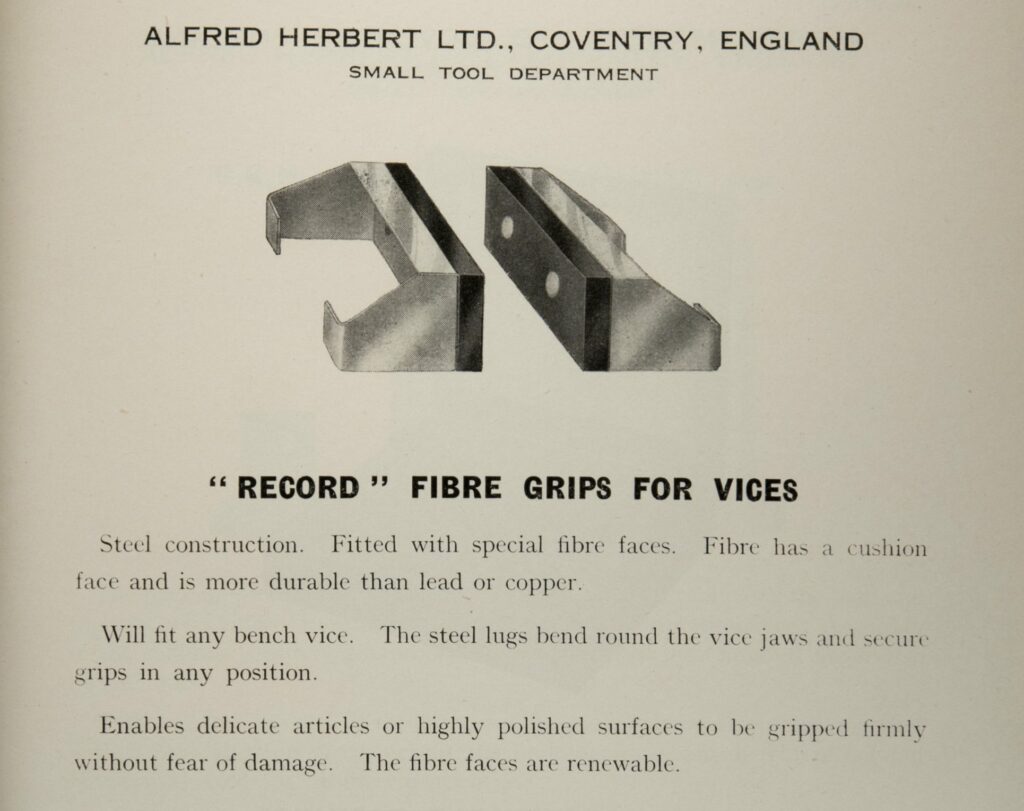
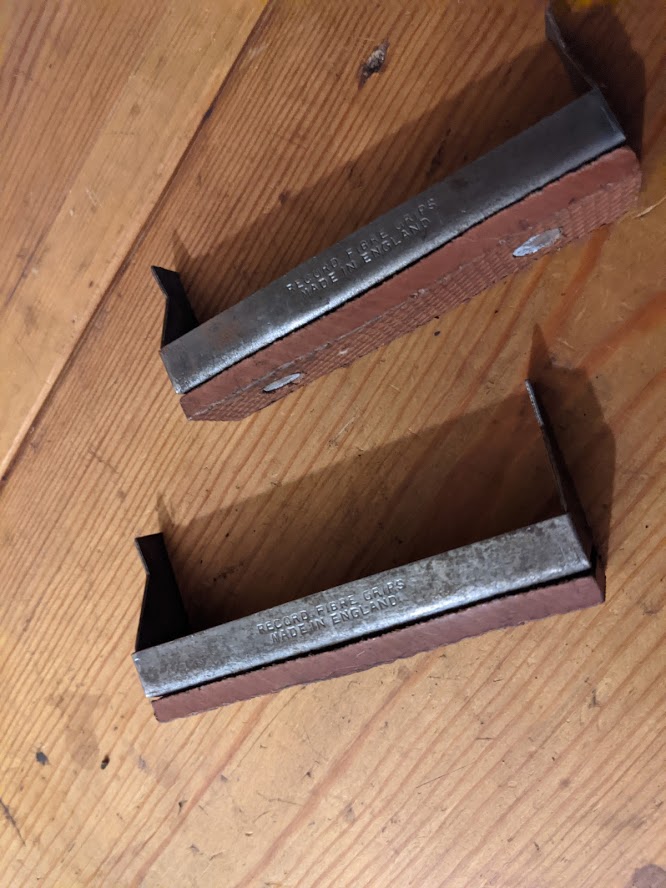
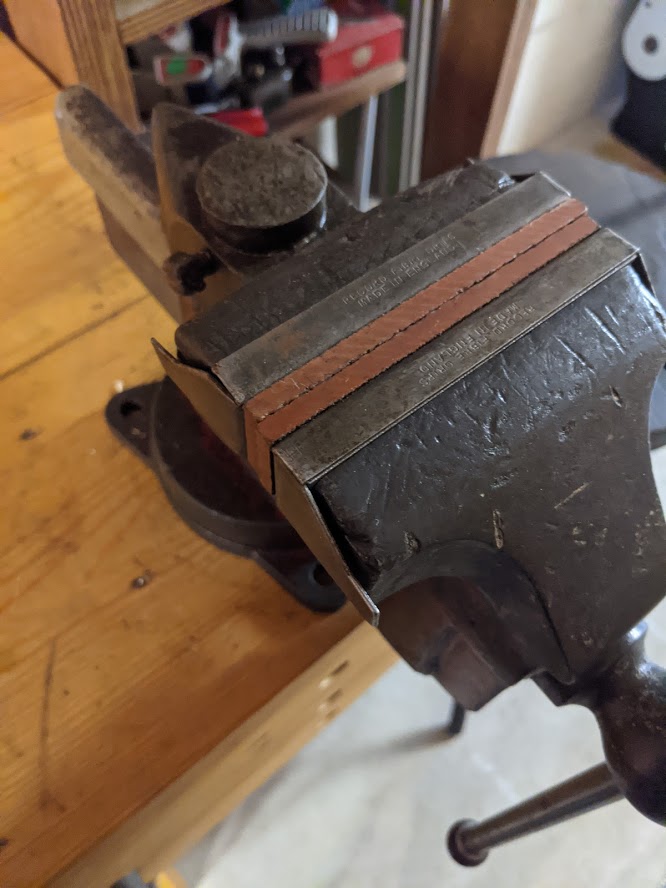
I managed to find some New Old Stock fibre jaws
Cylinder head holding plug
a hexagonal rod with two screw threads designed to insert into the threaded cylinder head holes that received the spark plugs (one for US plug thread and one UK). I assumed these had all been lost along with all the fibre jaws, but much to my surprise a fellow poster on the ukworshop.co.uk forum (where I original posted the information about this vice) is in possession of one:
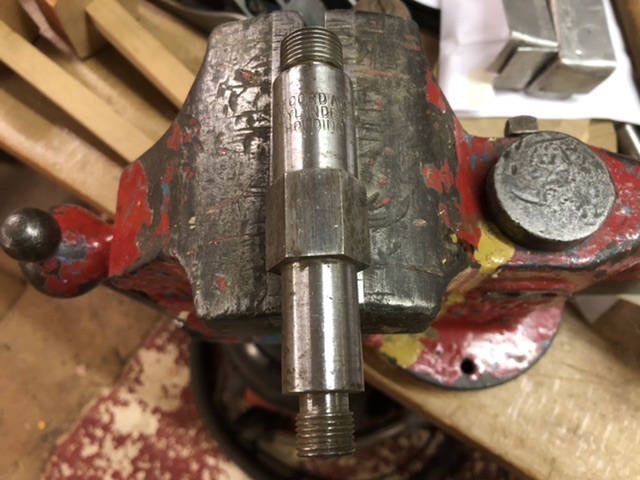

cylinder head holder
pipe gripper
Finally there was a pipe gripper included. This consisted of a removable v-shaped metal part with a serrated edge that fits in a groove in the moveable jaw, below the grip. The casting on the other side is v shaped and has a slot which receives the removable metal part allowing the vice to fully close even when it is installed. According to the patent the removable part was originally designed to be held in place by a set screw, but the screw was only used in the earliest models. This no doubt explains why they were all immediately lost.
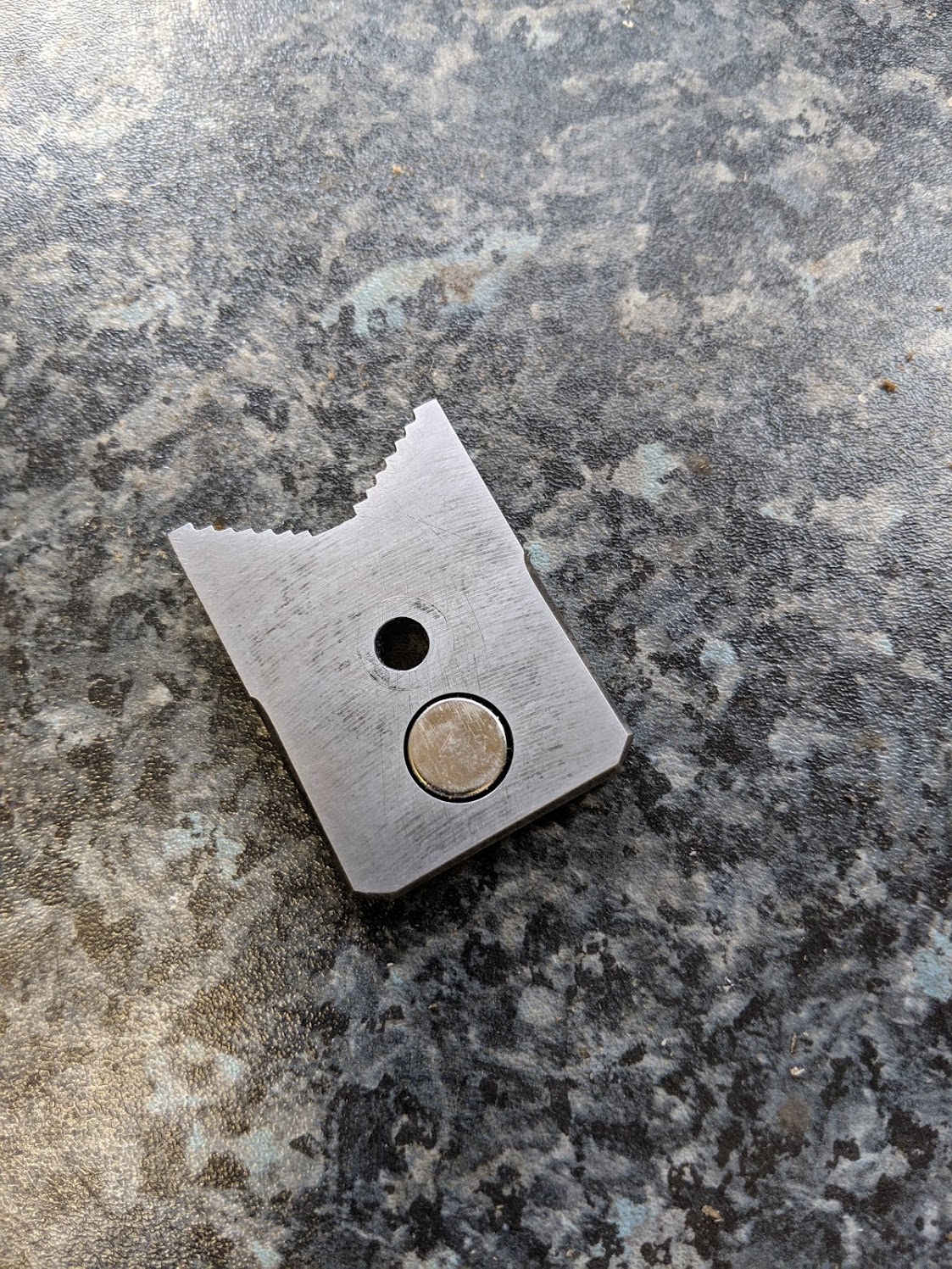
this is a modern replacement of the removable pipe gripper. An improvement on the original since it has an embedded magnet allowing it to be affixed to the body of the vice when not in use.
You may also be interested to read about the 74’s diminutive counterpart, the Record Imp 80.
References
| 1⏎ | In the 1935 Record catalogue it is slightly more expensive than the bog standard cast iron 4” no 3 mechanics vice ( £1 9/- vs £1 5/-) but cheaper than the equivalent swivel base model, the 3S, which cost £1 13/- |